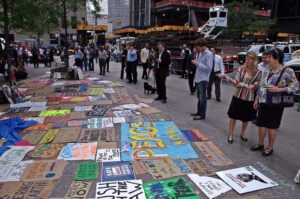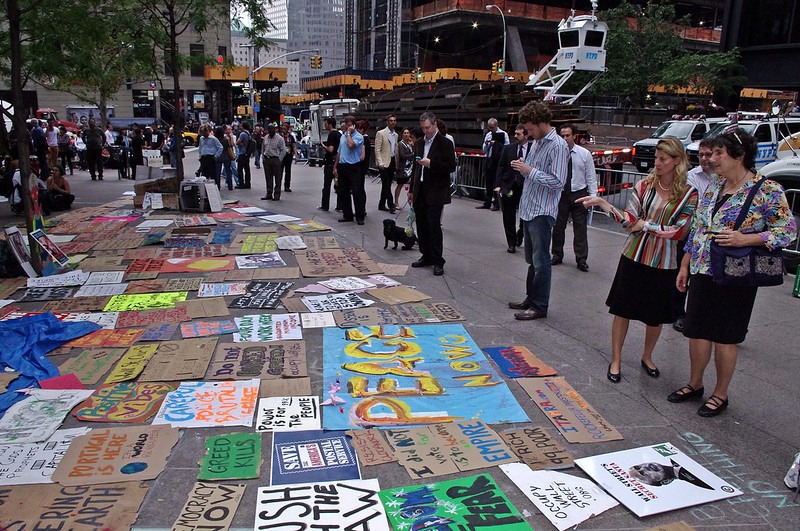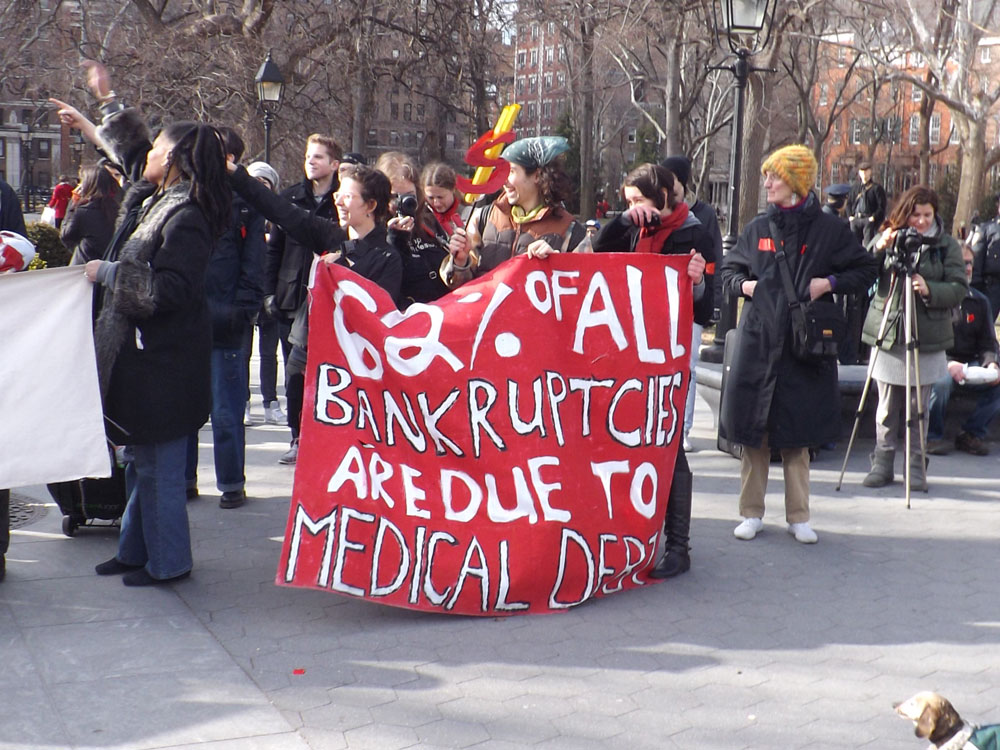December 5, 2011; Source: Oakland North | This article, from Oakland, is one of the more fascinating this author has read regarding the interconnection of protest and art, and in this case the interconnection comes at the nexus of the movement’s apparent shift from its first to its as yet unformed second phase. The article discusses the art of the movement as part and parcel of the movement’s work, and indeed, the way that it has been created and integrated is as free-flowing but aligned as the movement itself.
The article talks about two artistic efforts that are already fairly well known.
Occupy George is the product of two artists who worked long and hard on a set of red stamps to be used on dollar bills to spread Occupy’s message. The stamps basically convert each dollar into an infographic that contains statistics about the distribution of wealth in the country. The two creators, who are in advertising as a day job, say that stamping and then recirculating the dollar bills turns them into fliers. They have made a number of trips to Occupy sites, where they have set up booths to stamp the money of participants, but they have also set up a website to distribute open source templates of their designs.
House of Cards is an image now familiar to many. It was a group of sculptures constructed out of some of the metal barricades that had been placed around the Frank Ogowa Plaza after the protestors were finally forced out, on October 25th. Colin Dodsworth, 28, a public health employee, looked at the barricades and saw something different, and between 1:30 and 4:00 in the morning he and ten others constructed three structures resembling houses of cards—on one that looked like it had already collapsed, they placed a note reading “ready to fall?” The next morning, city workers puzzled over how to take the structures down, and after figuring out how to collapse on of them a bystander took a picture as it was falling and posted it on his Facebook page. The image went viral and appeared in media outlets around the country.
Sign up for our free newsletters
Subscribe to NPQ's newsletters to have our top stories delivered directly to your inbox.
By signing up, you agree to our privacy policy and terms of use, and to receive messages from NPQ and our partners.
One user, Daniel Horowitz, said he saw it as “representing perhaps how precarious and beautiful democracy is, how it is built on the ruins of oppression, but if we’re not careful can be used to repress us again.”
From the article:
“I think what’s different is that this Occupy movement is translatable and adaptable,” said Danielle Siembieda, an Oakland-based artist in her 30s, who manages social media for Zero1, a nonprofit exploring the intersection of technology and art. Occupy, she said, is not so much a singular protest as a template, reapplied to target cities, businesses, even cyberspace. “The artists have been able to translate back and forth between these scenarios.”—Ruth McCambridge












